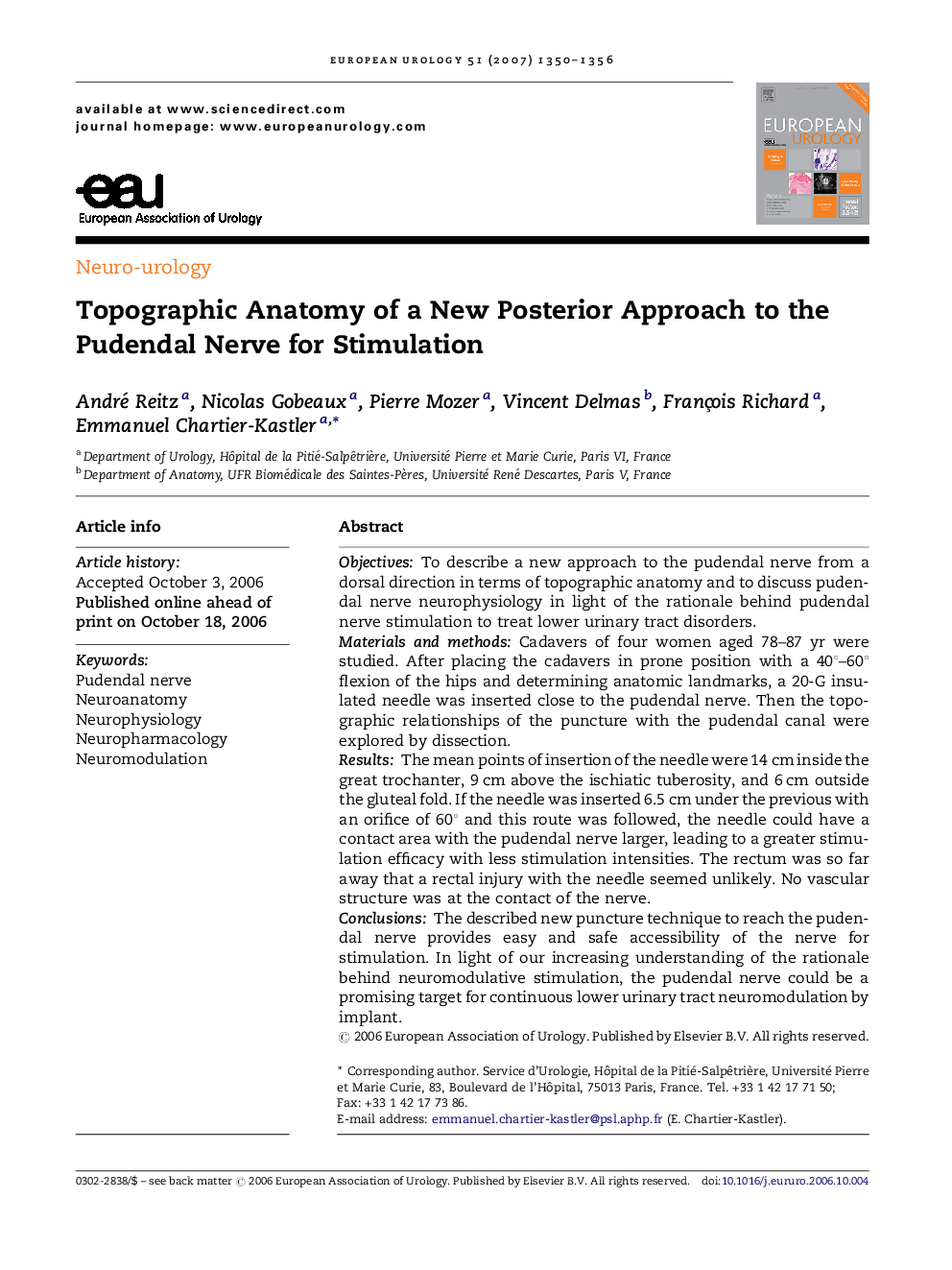| کد مقاله | کد نشریه | سال انتشار | مقاله انگلیسی | نسخه تمام متن |
|---|---|---|---|---|
| 3928674 | 1253206 | 2007 | 7 صفحه PDF | دانلود رایگان |

ObjectivesTo describe a new approach to the pudendal nerve from a dorsal direction in terms of topographic anatomy and to discuss pudendal nerve neurophysiology in light of the rationale behind pudendal nerve stimulation to treat lower urinary tract disorders.Materials and methodsCadavers of four women aged 78–87 yr were studied. After placing the cadavers in prone position with a 40°–60° flexion of the hips and determining anatomic landmarks, a 20-G insulated needle was inserted close to the pudendal nerve. Then the topographic relationships of the puncture with the pudendal canal were explored by dissection.ResultsThe mean points of insertion of the needle were 14 cm inside the great trochanter, 9 cm above the ischiatic tuberosity, and 6 cm outside the gluteal fold. If the needle was inserted 6.5 cm under the previous with an orifice of 60° and this route was followed, the needle could have a contact area with the pudendal nerve larger, leading to a greater stimulation efficacy with less stimulation intensities. The rectum was so far away that a rectal injury with the needle seemed unlikely. No vascular structure was at the contact of the nerve.ConclusionsThe described new puncture technique to reach the pudendal nerve provides easy and safe accessibility of the nerve for stimulation. In light of our increasing understanding of the rationale behind neuromodulative stimulation, the pudendal nerve could be a promising target for continuous lower urinary tract neuromodulation by implant.
Journal: European Urology - Volume 51, Issue 5, May 2007, Pages 1350–1356